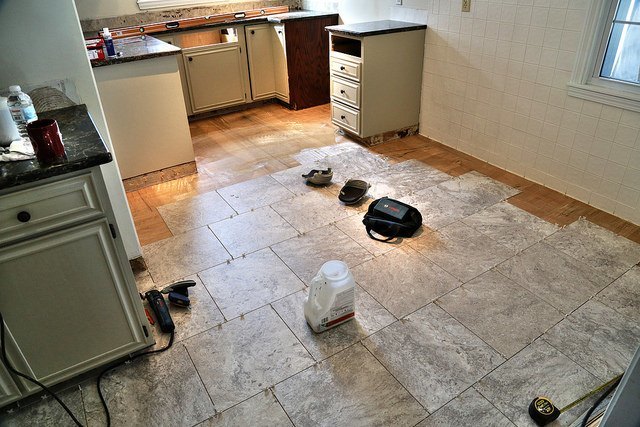Plywood is used for making many different things, from furniture to homes. In many cases, the plywood is not left exposed but used as a substrate, providing structural strength and a flat surface to adhere to the finish materials. But how well those materials adhere to the plywood may not be as good as we like.
Several things can get in the way of adhesives or mastics sticking to the surface of the plywood. But basically, they break down into a few categories:
• Texture – Other than luan and cabinet grade plywood, most plywood does not provide a smooth surface. This causes problems with some things, like vinyl lettering, which need full surface contact with the substrate to adhere well. Solving this problem requires filling the surface of the plywood and sanding it smoothly.
• Moisture – Plywood direct from the mill often contains too high a moisture content to guarantee good adhesion. This is easily solved by allowing the plywood to dry to a moisture content of 12 percent before applying the finish material.
• Porosity – Wood, in general, provides a porous surface. Since most plywood is made of softwood, the surface is even more porous than hardwood plywood would be. This causes the wetting agents of the adhesive to soak into the surface of the wood, reducing the effectiveness of the adhesive.
• Chemicals – In the case of pressure-treated plywood, the plywood’s chemicals cause adhesion problems. Washing the plywood with soap and water and then allowing it to dry for a few weeks before painting will eliminate this problem.
• Flexibility – If too thin a piece of plywood is used as a substrate, it may flex from the weight of people walking on it, causing cracking in the adhesive. This problem is especially prevalent when installing ceramic tiles. It is always necessary to ensure that a sufficiently thick piece of plywood is used to provide rigidity.
Using primer-sealer
In most cases, plywood should be sealed with a quality primer sealer before applying any other finish material to the plywood. The primer sealer eliminates the problem of porosity and the chemicals from pressure-treated wood, providing a good surface for adhesives to stick to. The one great exception to this would be when finishing hardwood plywood in furniture and cabinets.
Tiles
When installing ceramic tile over plywood, always use a pre-mixed flexible-based adhesive, not the type you mix in a tub on site. These are rigid adhesives, which will not survive the normal flexion of the plywood.
Vinyl tiles offer a different problem than ceramic tiles. They are naturally flexible, so they don’t have any problem with cracking when the plywood flexes. The problem with them is gaining good adhesion. If the substrate is exterior-grade plywood, a thin layer of finish plywood should be applied before the vinyl tile. One-quarter inch of “A” finished plywood (not luan) will provide an excellent substrate.
Prime this thin layer of plywood before installing the tile, allowing the primer to dry fully. After installation, the vinyl tile should always be rolled with a 75 or 100-pound roller to ensure full contact between the adhesive and the substrate.
Tapes
Even tapes have a problem sticking effectively to plywood due to the same problems of texture and moisture. Some tapes, specifically those designed for rough surfaces, work well with plywood. Gorilla brand and 3M both produce duct tapes that are specifically designed for use with rough surfaces.




